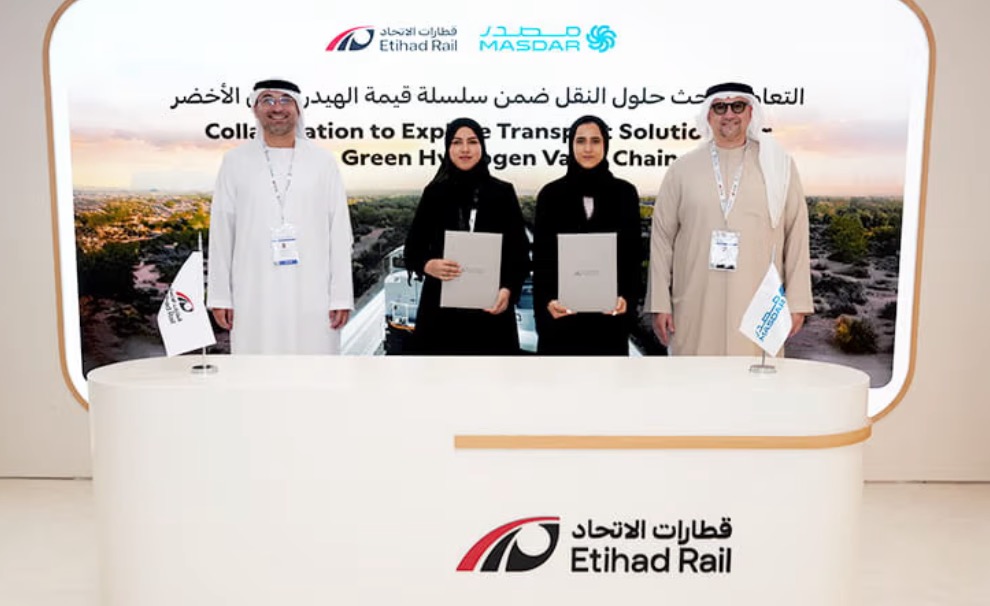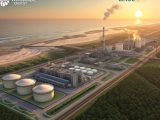
Hydrogen Infrastructure Drive: Masdar and Etihad Rail Partner for UAE Green Hydrogen Transport
October 7, 2025Have you ever thought about how those desert solar panels beam power into a network that literally carries molecules of renewable energy across the country? For ages, the UAE’s skyline—once all about oil rigs and skyscrapers—has been a hydrocarbons landmark. Today, that story is getting a rewrite. Masdar and Etihad Rail have just signed an MoU to figure out rail-based solutions for hauling green hydrogen and its byproducts. It’s a big step in the nation’s race to net-zero emissions and a smart play on the booming demand for clean fuels. With nearly 9.4 million people and a prime location bridging East and West, the UAE is betting on a diversified sustainable energy economy to fuel its next chapter.
Meet the Players
So who’s at the table? First up, Masdar—also known as Abu Dhabi Future Energy Company—has been pushing the envelope on sustainable energy for almost two decades. Under CEO Mohamed Jameel Al Ramahi, they’re diving headfirst into the hydrogen scene, striking partnerships from Europe to Asia. Then there’s Etihad Rail, led by CEO Shadi Malak. These are the folks building the UAE’s national rail network, and they’re dead set on weaving hydrogen infrastructure into what will be the most advanced rail system in the region. They’ve already tested battery-electric freight cars and are trialing low-carbon fuels—a clear signal they’re serious about decarbonizing their fleet.
Breaking Down the MoU
On October 4, 2025, at the Global Rail Transport & Infrastructure Exhibition in Abu Dhabi, these two heavyweights didn’t just shake hands—they inked an MoU packed with real deliverables. We’re talking joint feasibility studies on rail readiness, bespoke tanker designs, safety protocols, and route planning. The focus? Transporting hydrogen from coastal electrolyzer plants to inland industrial zones, and shipping derivatives like clean ammonia, methanol, and sustainable aviation fuel. By pooling R&D efforts, they’re crafting a playbook with pilot corridors, regulatory approvals, and tech demos all aligned with the UAE’s hydrogen roadmap.
From Desert Sands to Rails
The UAE’s desert—once dotted only by oil rigs—is now home to sprawling solar farms and wind parks. But without a solid transport network, all that renewable juice sits idle. Enter Etihad Rail’s under-construction grid, set to link all seven emirates, major ports, and industrial zones. Stretching across Abu Dhabi, Dubai, Sharjah, and beyond, these rails could swap out diesel truck convoys for low-carbon trains. What once ferried crude might soon carry zero-emission fuels, turbocharging the UAE’s pivot to sustainable energy.
Leveraging Electrolysis and Rail Logistics
The magic trick here is marrying electrolysis with heavy-duty rail logistics. Green hydrogen comes to life when renewable electrons split water into hydrogen and oxygen—a process Masdar has already proven at scale. Once you’ve got hydrogen in hand, you can whip up ammonia, methanol, or blend it into sustainable aviation fuel. But production is only half the story. Getting these molecules where they need to go, cost-effectively, is the real win. Rail shines here: trains gulp far less energy per ton-kilometer than trucks, slice congestion, cut emissions, and stick to reliable schedules.
Scaling Up for Industrial Decarbonization
Heavy industries—think steel mills, cement plants, and petrochemical complexes—eat up massive amounts of fossil fuels. Green hydrogen and its derivatives are the secret weapons for slashing their carbon footprints. By routing low-carbon feedstocks straight into these facilities via rail, companies can swap out natural gas or oil for critical high-heat processes or chemical inputs. And here’s the kicker: ramp up rail volumes, watch unit costs plummet, and suddenly hydrogen-based inputs make economic sense—supercharging industrial decarbonization across the UAE. Plus, these same clean fuels could power ships and heavy trucks beyond the rails.
Strategic Implications and Next Steps
Signing ceremonies are fun, but the real grind starts now. Joint technical working groups will dive into track tweaks, tanker safety standards, temperature control, and pressure management. They’ll work with regulators to update national rail codes, ensure hydrogen carriage meets top safety benchmarks, and make sure the new hydrogen infrastructure meshes seamlessly with existing systems. Training programs will equip engineers and operators with fresh skills—spawning green-tech jobs and building up local expertise. If early trials go smoothly, we could see commercial corridors up and running in just a few years, paving the way for export terminals and international partnerships that lock in the UAE’s clean-energy cred.
Wider Ripple Effects
Smart rail logistics for green fuels won’t just transform railways—it’ll ripple across the economy. Fewer trucks on highways mean lower emissions and less road damage. Local manufacturing of specialized tankers and coupling systems could spark new suppliers. On the export front, shipping green ammonia or methanol to Asia and Europe becomes a no-brainer. This model could even inspire neighboring Gulf states to team up on infrastructure and standards. And by reinforcing national net-zero targets, the UAE cements its role as a bona fide hydrogen hub in the Middle East and North Africa.
Looking Ahead
We’re at the dawn of a logistics revolution where deserts once defined by oil become arteries for zero-emission fuels. Technical challenges, regulatory hoops, and market uncertainties lie ahead, but with Masdar and Etihad Rail at the helm, they’ve got the expertise to navigate these waters. Expect feasibility studies, pilot runs, and safety trials rolling out soon. If everything falls into place, this blueprint won’t just accelerate domestic green hydrogen uptake—it could spark similar initiatives worldwide. And who wouldn’t want a front-row seat to that?



 With over 15 years of reporting hydrogen news, we are your premier source for the latest updates and insights in hydrogen and renewable energy.
With over 15 years of reporting hydrogen news, we are your premier source for the latest updates and insights in hydrogen and renewable energy.